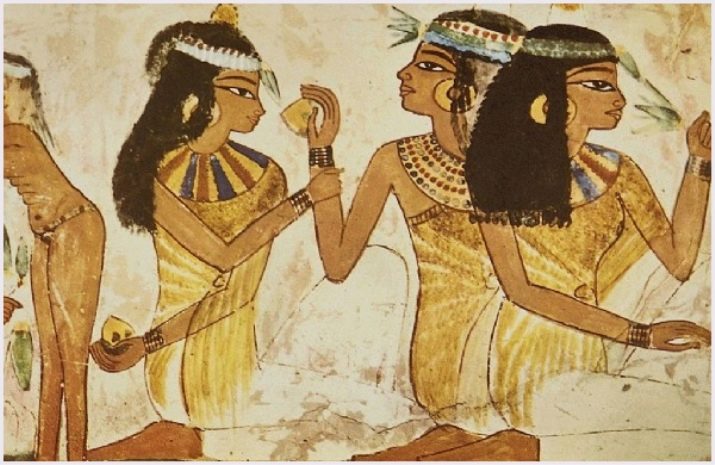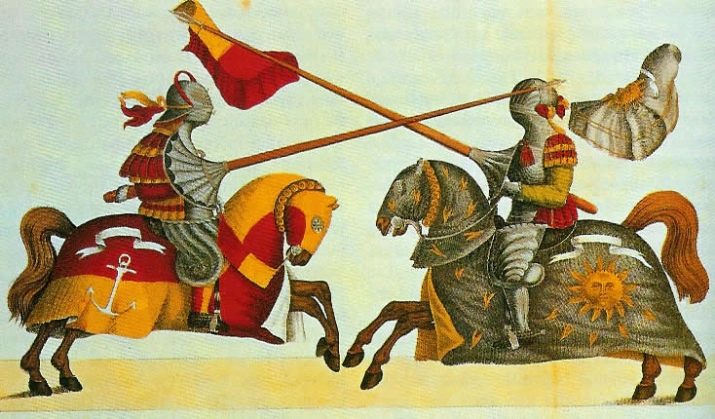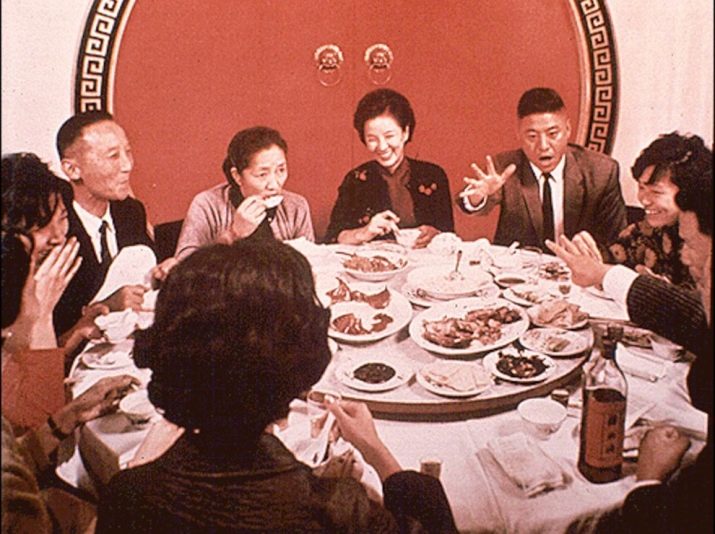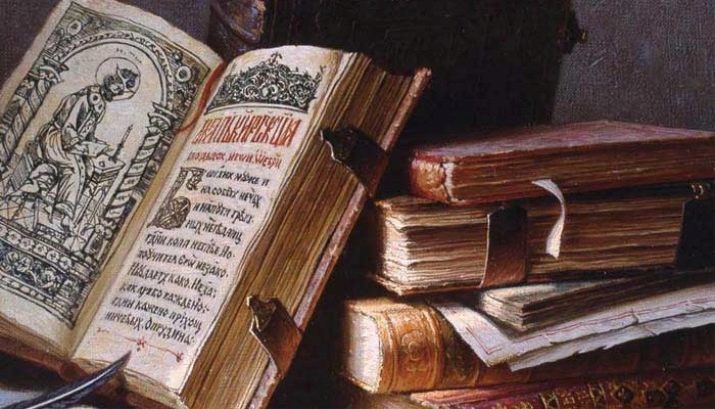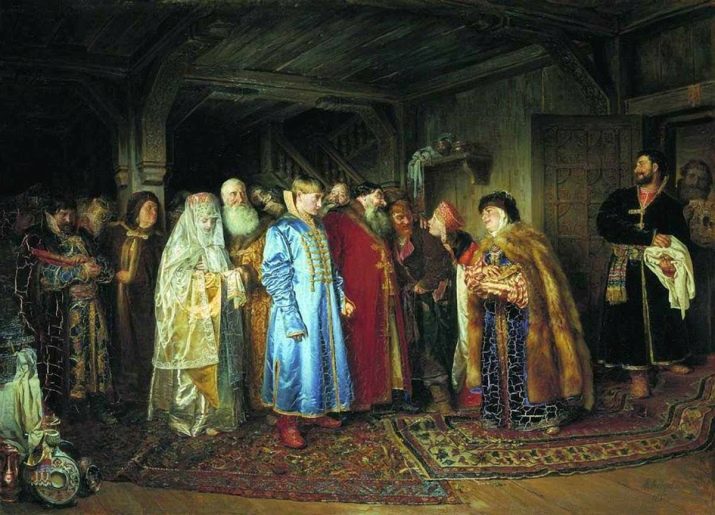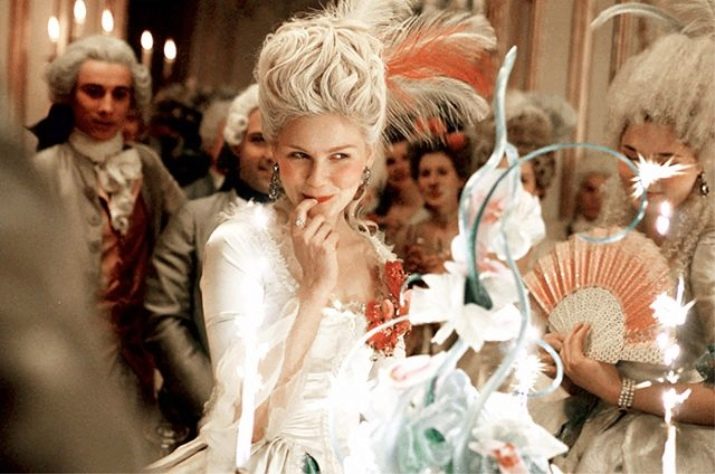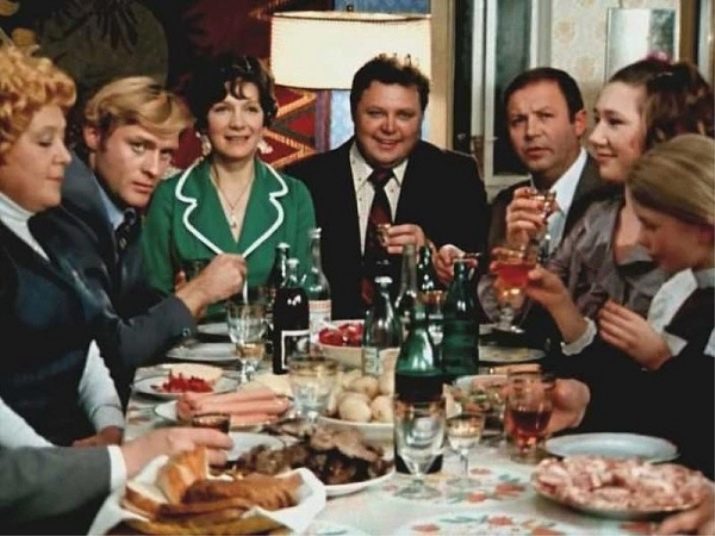The history of etiquette: the main stages of development

Being in society, we can not disobey certain rules and principles, because it is the key to comfortable coexistence with others. Almost every inhabitant of the modern world is familiar with such a word as “etiquette”. What does it mean?
The first sources of etiquette
Etiquette (from the French. Etiquette - label, inscription) - these are accepted norms of behavior of people in society, which should be followed to avoid awkward situations and conflicts.
It is believed that the concept of "good manners" originated in times of extreme antiquity, when our ancestors began to unite in communities and live in groups. Then there was a need to develop a set of rules that would help people control their behavior and get along together without resentment and disagreement.
Women respectful of their husbands-miners, the younger generation was brought up by the most experienced members of the community, people worshiped shamans, healers, gods - these are the first historical roots that laid the meaning and principles of modern etiquette. Before its appearance and formation, people disrespectfully treated each other.
Etiquette in Ancient Egypt
Even before our era, many famous people tried to come up with their own various recommendations on how a person should behave at the table.
One of the most popular and famous manuscripts in the 3rd millennium BC, which reached us from the Egyptians, was a compilation of special councils called “Instructions of the Kochemni”, written to teach people good manners.
In this collection were collected and described tips for fathers, who recommended teaching their sons the rules of decency and good form, so that in society they would behave in a proper manner and not tarnish the honor of the family.
Already at that time, the Egyptians considered it necessary to use cutlery during the lunch meal. It was required to eat beautifully, with the mouth closed, without making unpleasant sounds. Such behavior was regarded as one of the main advantages and advantages of a person, and was also an important component of the cultural component.
However, sometimes the requirements for compliance with the rules of decency reached the point of absurdity. There was even a saying: "Good manners make the king a slave."
Etiquette in Ancient Greece
The Greeks believed that it was necessary to wear beautiful clothes, to behave with family, friends and just acquaintances with restraint and calm. It was customary to dine in the circle of close people. To fight only violently - not to retreat a single step and not beg for mercy. It was here that table and business etiquette was born for the first time, special people appeared - ambassadors. They were issued documents on two cards stacked with each other, which were called “diploma”. Hence the concept of "diplomacy".
In Sparta, on the contrary, a sign of good tone was a demonstration of the beauty of her own body, so the inhabitants were allowed to go naked. Impeccable reputation required to eat out.
The Middle Ages Era
In this dark time for Europe, the development of society began to decline, but people nevertheless adhered to the rules of good manners.
In the X century n. er flourished Byzantium. According to the rules of etiquette, the ceremonies here were very beautiful, solemn, magnificent. The task of such an exquisite event was to blind ambassadors from other countries and demonstrate the power and the greatest power of the Byzantine Empire.
The first popular theory of behavior was the work "Discipline clericalis", published only in 1204. Its author was P. Alfonso. The doctrine was designed specifically for the clergy. Based on this book, people from other states — England, Holland, France, Germany, and Italy — released their etiquette textbooks. Most of these rules were the rules of behavior at the table during the meal. Questions about how to make small talk, receive guests and organize events were also covered.
A little later, the word "etiquette" appeared. It was introduced into constant use by the well-known Louis XIV - the king of France. He invited the guests to his ball and distributed to all special cards - “labels”, where the rules of conduct during the holiday were written.
Knights appeared with their code of honor, created a great many new rituals and ceremonies, where initiations took place, accepted vassal dependence, entered into an agreement to serve the lord. At the same time, the cult of the worship of beautiful ladies arose in Europe. Knightly tournaments began to be held, where men fought for the chosen one, even if she did not reciprocate.
Also in the Middle Ages, to this day, there are such rules: a handshake at the meeting, the removal of headgear in greeting. In this way, people showed that they had no weapons in their hands and that they were set up for peace negotiations.
Land of the Rising Sun
In Japan and China, the rules of good manners were considered the same as the law. Here attention was paid to even the smallest details: gestures, movements, gaze.
For example, the rejection of a mug of water or a sidelong glance could have led to a whole clan war, which could continue for years until the complete destruction of one of them.
Chinese etiquette has more than thirty thousand different ceremonies, ranging from the rules of tea drinking and marriage.
Era of the Renaissance
This time is characterized by the development of countries: their interaction with each other is improving, culture is flourishing, painting is developing, the technical process is advancing. The concept of the effect of body cleanliness on health is also emerging: people begin to wash their hands before eating.
In the 16th century, table etiquette stepped forward: people began to use forks and knives. Modesty and humility come to replace pomp and feast. Knowledge of the rules and norms of etiquette becomes a distinctive feature of elegance and extravagance.
The history of the development of etiquette in the Russian state
Starting from the Middle Ages and until the reign of Peter I, the Russian people studied etiquette based on the book of the monk Sylvestre “Domostroy”, published under Tsar Ivan IV. According to her charter the man was considered the head of the family, to which no one dared to contradict. He could decide what was good and what was bad for his loved ones, had the right to punish his wife for disobedience and beat children as educational methods.
European etiquette came to the Russian state during the reign of Emperor Peter I. The artillery and naval education originally created by the ruler was replaced by a special school where they taught secular manners. One of the most famous was a work on the etiquette "Youth honest mirror, or Indications for everyday life", written in 1717, which was repeatedly copied.
Unequal marriages between people of different classes were allowed. People now had the right to enter into marriages with those who were divorced, with stripped monks and clergymen. Previously, this could not be done.
It is strictly forbidden to marry young people who have not graduated from school, so that they could not escape military service.
The most severely complicated rules and norms of behavior for women and girls. Interdictions pursued a female from the very diapers.It was strictly forbidden for young girls to dine at a party, to talk without permission, to show their skills in languages or any other field. However, they should have been able at a certain point to blush shamefully, suddenly faint and smile charmingly. The young lady was forbidden to go out alone or be alone with a man for even a couple of minutes, despite the fact that he could be her good friend or fiancé.
The rules prescribed a girl to wear modest clothes, to speak and laugh only in a muffled voice. Parents were obliged to watch what their daughter reads, what kind of dating she gets and what kind of entertainment she prefers. After marriage, the rules of etiquette for a young woman softened a bit. However, she, as before, had no right to receive male guests in the absence of her husband, to go out alone to social events. After marriage, a woman very carefully tried to follow the beauty of her speech and behavior patterns.
Events for the upper world to the very beginning of the XIX century included both public and family invitations. Be sure to have held various balls and masquerades for all three months of winter, because it was the main place for dating between potential wives and husbands. Visits to theaters and exhibitions, fun walks in parks and gardens, skiing from slides on holidays - all of these varied entertainment has become increasingly common.
In the Soviet Union, such a phrase as "high life" was abolished. People of the upper classes were exterminated, their foundations and customs were ridiculed and distorted to the point of absurdity. Special rudeness in the treatment of people began to be considered a sign of the proletariat. At the same time, various kinds of chiefs moved away from subordinates. Knowledge and possession of good manners were now in demand only in diplomacy. Celebrations and balls began to organize less and less. The best form of leisure steel feasts.
Now, instead of the word “you,” it has become more common to use “you” in order to completely eradicate intelligence and to show that in the Soviet state everyone is equal and significant to the same degree. Gradually began to equalize the rights of men and women.
Currently, the concept of "etiquette" includes laws of rules and norms that have formed at different historical intervals. Every nation was able to make its own amendments to it, which arose as a result of the specific way of life of each state.
The western world is considered the birthplace of world etiquette. In the 21st century, in the course of a long and careful selection of the results of the life experience of all countries and peoples of the world, a set of etiquette rules included only the most popular and the best of them. However, it cannot be considered completely complete. We are developing, society is improving, and everywhere certain rules and norms of behavior are required. Etiquette will be introduced and increasingly become more complex, becoming more and more complete and meaningful.
You will learn more about the rules of etiquette in the following video.



